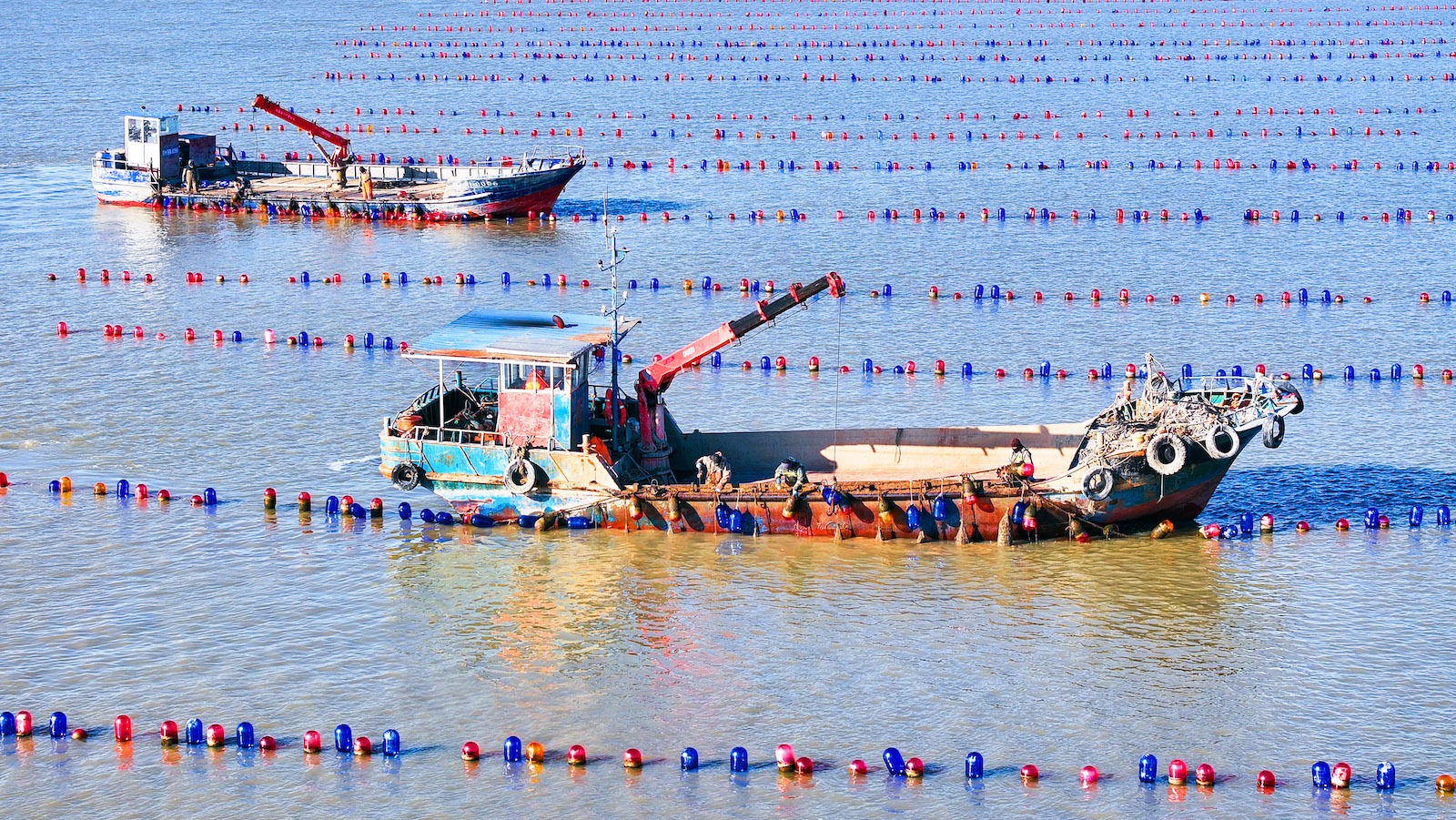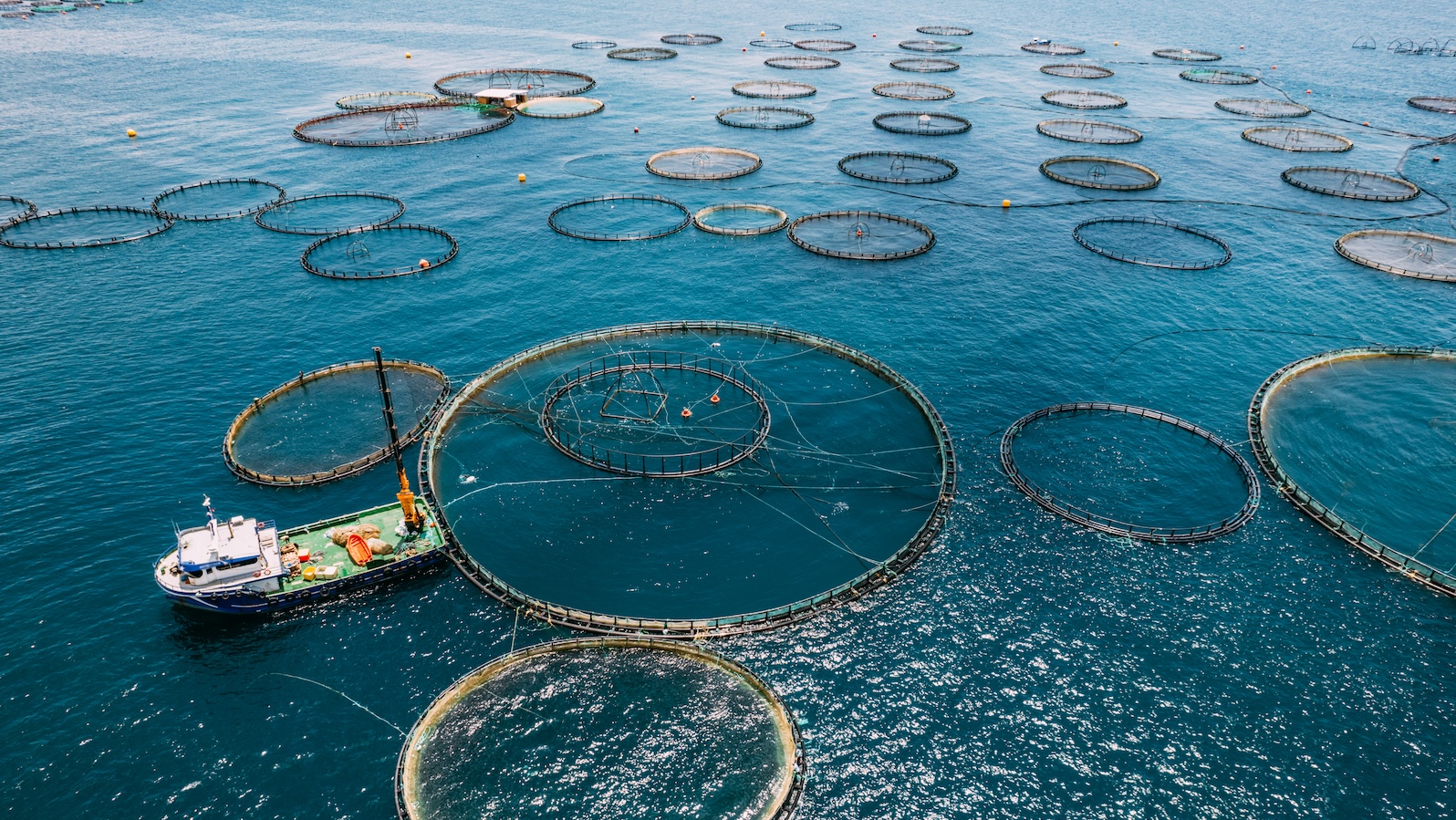This coverage is made possible through a partnership between Grist and Verite News, a nonprofit news organization with a mission to produce in-depth journalism in underserved communities in the New Orleans area.
President Donald Trump’s first-term push to open the Gulf of Mexico and other federal waters to fish farming has come to a halt in the early days of his second term.
A federal judge in Washington state ruled against a nationwide aquaculture permit the Trump administration sought in 2020. The wide-ranging permit would have allowed the first offshore farms in the Gulf and the likely expansion of the aquaculture industry into federally managed waters on the East and West coasts.
The ruling, issued by U.S. District Court Judge Kymberly K. Evanson on March 17, was applauded by several environmental groups.
“A nationwide permit isn’t at all appropriate because our federal waters are so different,” said Marianne Cufone, executive director of the New Orleans-based Recirculating Farms Coalition, a group opposed to offshore aquaculture. “Florida is not Maine. California is not Texas. And in just the Gulf of Mexico, there are significantly different habitats [and] different fish species that could be affected.”
Offshore aquaculture, which involves raising large quantities of fish in floating net pens, has been blamed for increased marine pollution and escapes that can harm wild fish populations. In the Gulf, there’s particular concern about the “dead zone,” a New Jersey-size area of low oxygen fueled by rising temperatures and nutrient-rich pollution from fertilizers, urban runoff and sewer plants. Adding millions of caged fish would generate even more waste and worsen the dead zone, Cufone said.
Fish farming is an “existential threat” to the Gulf’s fishing industry, said Ryan Bradley, executive director of the Mississippi Commercial Fisheries United. Besides the “cascading negative impacts” on the environment, offshore aquaculture often undercuts the prices of wild-caught fish and shrimp, he said. The Gulf’s fishers are already facing intense competition from foreign fish farms.
“Offshore aquaculture poses too much risk and not enough reward,” Bradley said.
The aquaculture industry says fish farming is the only way to meet surging demand for seafood, particularly high-value species like salmon and tuna. As wild fish stocks struggle under climate change, offshore farming could help the U.S. adapt, producing food in a managed environment less affected by ecological conditions, aquaculture advocates say.
Late last year, the National Oceanic and Atmospheric Administration identified five areas in the Gulf that the agency said are best suited for offshore aquaculture. The development of these “aquaculture opportunity areas” near the coasts of Texas and Louisiana received a strong push during Trump’s first term but slowed under President Joe Biden. Evanson’s decision blocks what might have been a speedy approval process for fish farms in opportunity areas.
A cumbersome permitting process and opposition from environmentalists and catchers of wild seafood had long stymied plans for fish farms in the Gulf, which Trump recently renamed the Gulf of America. In 2020, the aquaculture industry got a big boost when Trump signed an executive order that directed federal agencies to “identify and remove unnecessary regulatory barriers” restricting farming in federal waters.
Trump’s order led the U.S. Army Corps of Engineers to issue the sweeping national permit to open nearly all federal ocean waters to aquaculture. The Center for Food Safety and other environmental groups sued, arguing that the permit failed to analyze fish farming’s threats to water quality and marine life, including several species protected under the Endangered Species Act.
In October, an initial decision by Evanson, who was appointed by Biden, faulted the Corps for failing to acknowledge aquaculture’s adverse environmental impacts. Evanson’s latest decision vacates, or sets aside as unlawful, the nationwide permit.
The Corps declined to comment on the decision.
Federal courts have also struck down efforts to establish offshore aquaculture in the Gulf in 2018 and 2020.
The repeated legal setbacks should send a clear signal to the industry, said George Kimbrell, the Center for Food Safety’s legal director.
“It has no place in U.S. ocean waters,” he said.
The aquaculture industry isn’t giving up. Paul Zajicek, executive director of the National Aquaculture Association, said expanding U.S. fish farming is critical for meeting the growing American appetite for seafood. He noted that the U.S. consumed nearly 7 billion pounds of seafood in 2022, the most recent year data was available. About 83 percent of the seafood was imported, contributing to a trade deficit of about $24 billion, Zajicek said.
“The heavy reliance on imports for a foodstuff critical to people’s health not only creates a massive trade imbalance, it also creates food security and food safety issues for our country,” he wrote in an email.
Tilting the balance of international trade is a keen interest for Trump, who on Wednesday announced far-reaching and expensive tariffs that the president says will help U.S. producers and boost the country’s economy.
The U.S. has a robust land-based aquaculture industry, producing pond-raised catfish, trout and other fish. No fish are raised commercially in federal waters, and fish farming operations are increasingly rare in state-managed marine waters. Washington state once had a large salmon farming industry, but large-scale escapes of non-native Atlantic salmon and concerns about pollution and the spread of disease led to a halt on fish farm leases in 2022 and a full ban in January. Hawaii’s state waters host the only offshore fish farm in the U.S.
Other countries have embraced offshore aquaculture on a large scale. China accounts for more than half of global aquaculture production, according to NOAA. Asian countries and Ecuador supply most of the shrimp consumed in the U.S., while farms in Canada, Norway and Chile produce two-thirds of the salmon Americans eat.
Companies have tried to open the Gulf to aquaculture for more than a decade, yet none of the proposals for floating pens filled with redfish, amberjack and other high-value species have managed to take hold. In 2017, the federal government helped fund a pilot project that would have placed a floating farm about 45 miles from Sarasota, Fla. The project was derailed after regulators received nearly 45,000 public comments opposing it, according to Zajicek.
Proposed farms face “a permitting system that is too lengthy, too costly, and too subject to legal challenges from groups opposed to commercial aquaculture,” he said.
Last month’s court decision means companies may now narrow their focus and seek permits for individual projects, Zajicek said.
That approach also won’t be easy, Cufone warned. The process for permitting each project will likely be slower and more deliberative, giving more consideration to a proposed farm’s impacts on the surrounding environment and nearby communities.
“Claiming one size fits all doesn’t seem realistic, and the court agreed,” she said. “Now they can’t use one big permit to speed these things through.”
Source link
Tristan Baurick grist.org



